Do you want to know how you can fix display driver issues on Adobe Photoshop?
You might face various issues while working on Adobe Photoshop. Despite being one of the best image processing software, Photoshop is not safe from random glitches and occasional errors.
Like any app or platform, Adobe Photoshop comes with its own issues.
Display driver issues are one of the most common problems you might face with Adobe Photoshop. This often occurs on PCs with lower-end hardware or outdated software.
When you encounter display driver issues on Adobe Photoshop, you won’t be able to use the program until the error is addressed. Usually, this is caused by corrupted or outdated display drivers.
If your drivers are not working correctly, your system cannot utilize your hardware.
On the other hand, display driver issues on Adobe Photoshop can also be due to improper configurations and system restrictions.
In this guide, we’ll show you how to fix display driver issues on Adobe Photoshop.
Let’s get started!
1. Restart Your Computer.
Before changing your system configurations, try restarting your computer first if you encounter display driver issues. This should reload your system resources and eliminate temporary errors that may have occurred during run time.
Check out the steps below to restart your PC:
- On your PC, go to the Start Menu by pressing the Windows icon on the Taskbar.
- After that, access the Power Options tab.
- Finally, click on Restart to reboot your system.
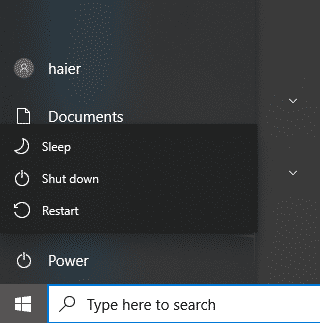
After restarting your PC, go back to Adobe Photoshop to check if the problem is solved.
2. Update Your Graphics Driver.
Faulty or outdated graphics drivers are the common cause of this error on Adobe Photoshop. With this, we recommend updating your graphics driver to the latest version to patch possible bugs and errors.
Here’s how you can update your display drivers:
- First, press the Windows + X keys on your keyboard to open the Quick Menu.
- Next, click on Device Manager.
- Expand the Display Adapters tab and right-click on your video card.
- Lastly, choose Update Driver and follow the prompts.
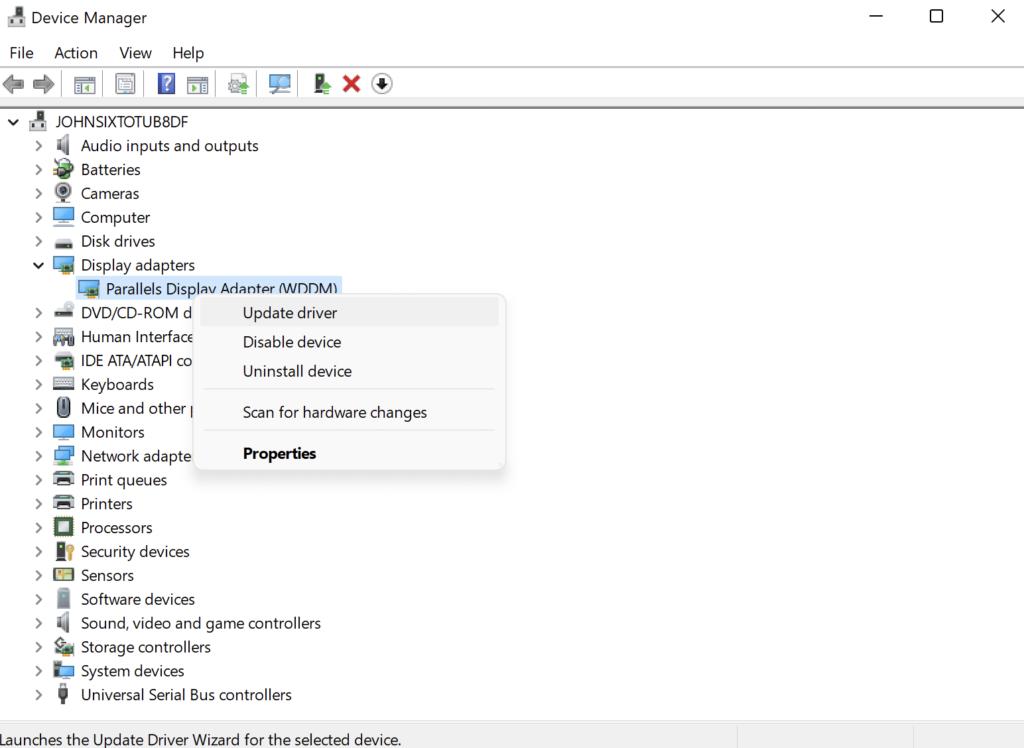
Once done, restart your computer and check if the problem is solved.
3. Run Photoshop As Admin.
Windows might be restricting Adobe Photoshop from accessing certain resources, which causes display driver issues. To fix this, run Photoshop as an administrator to grant it full access to your system.
See the steps below to guide you through the process:
- On your desktop, right-click on Adobe Photoshop and choose Properties.
- Now, go to the Compatibility tab.
- Finally, enable the ‘Run this Program as an Administrator’ and save the changes.
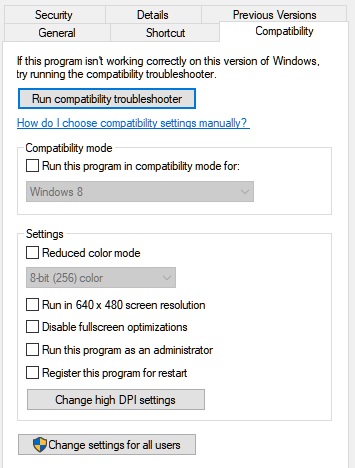
Relaunch Adobe Photoshop on your computer afterward and see if you’ll encounter display driver issues.
4. Disable On-Board Graphics.
If your processor has on-board graphics, it might be the reason for display driver issues on Adobe Photoshop. Your system could be forcing Photoshop from using the on-board graphics instead of your dedicated GPU.
To fix this, see the steps below to disable your on-board graphics:
- First, press the Windows + X keys on your keyboard to access the Quick Menu.
- After that, open the Device Manager and expand the Display Adapters tab.
- Lastly, right-click on your on-board graphics and choose Disable Device.

Reboot your system afterward and check if you still encounter display driver issues on Adobe Photoshop.
5. Update Windows.
Outdated versions of Windows could also cause display driver issues on Adobe Photoshop. Before running the program, ensure that you’re using the latest official version of Windows on your computer.
Here’s what you need to do:
- First, open Windows Settings on your computer.
- After that, click on Windows Update from the side menu.
- Lastly, click on Download & Install if there’s a new version available.
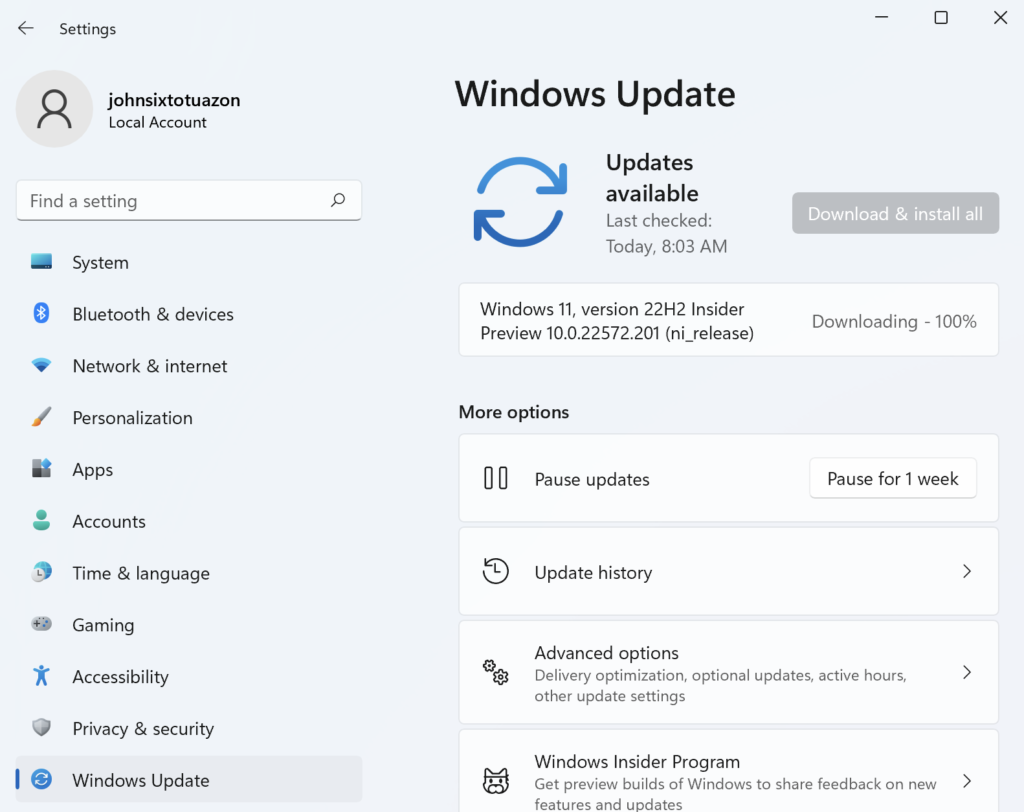
Go back to Adobe Photoshop after the update and check if the problem is solved.
6. Remove Sniffer.EXE.
If you’re not doing heavy tasks on Adobe Photoshop or your processor is powerful enough to handle the workload, we suggest removing Sniffer.exe from Photoshop’s installation folder. This is a program that enables Photoshop from using your dedicated graphics for increased performance.
If Adobe Photoshop doesn’t use your graphics card, then you won’t encounter display driver issues.
See the steps below to remove Sniffer.exe from your storage:
- Before doing anything, ensure that Adobe Photoshop is not running on your PC.
- After that, go to This PC > C: > Program Files > Adobe > Adobe Photoshop CC.
- Lastly, locate the Sniffer.exe file and move it to another folder or delete it from your system.
Once done, restart your system and go back to Adobe Photoshop. Try using the app as you normally would and see if you’ll still encounter display driver issues.
7. Reinstall Photoshop.
At this point, the last thing you can do is reinstall Adobe Photoshop on your computer. This way, we can ensure that there are no missing or broken installation files on your system and you have the latest working copy of Photoshop.
Check out the guide below to delete Photoshop:
- Access the Control Panel on your Windows PC.
- Next, click on Uninstall a Program.
- Finally, right-click on Adobe Photoshop and choose Uninstall.
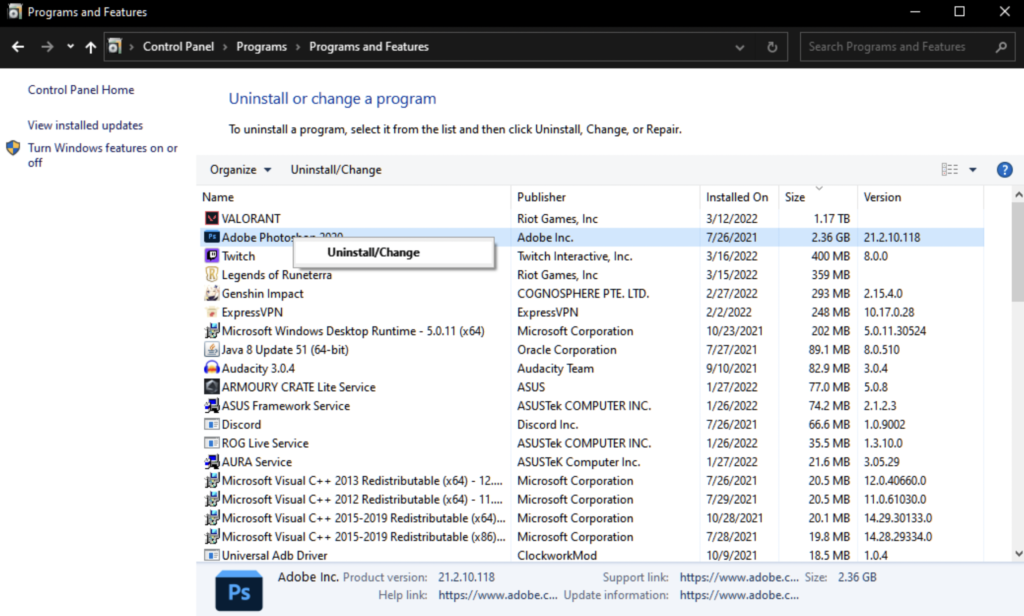
Go to Adobe Photoshop’s website afterward and download the latest version from there.
That ends our guide on how to fix graphics driver issues on Adobe Photoshop. For your questions and other concerns, leave a comment below, and we’ll be here to help.
If this guide helped you, please share it. 🙂





